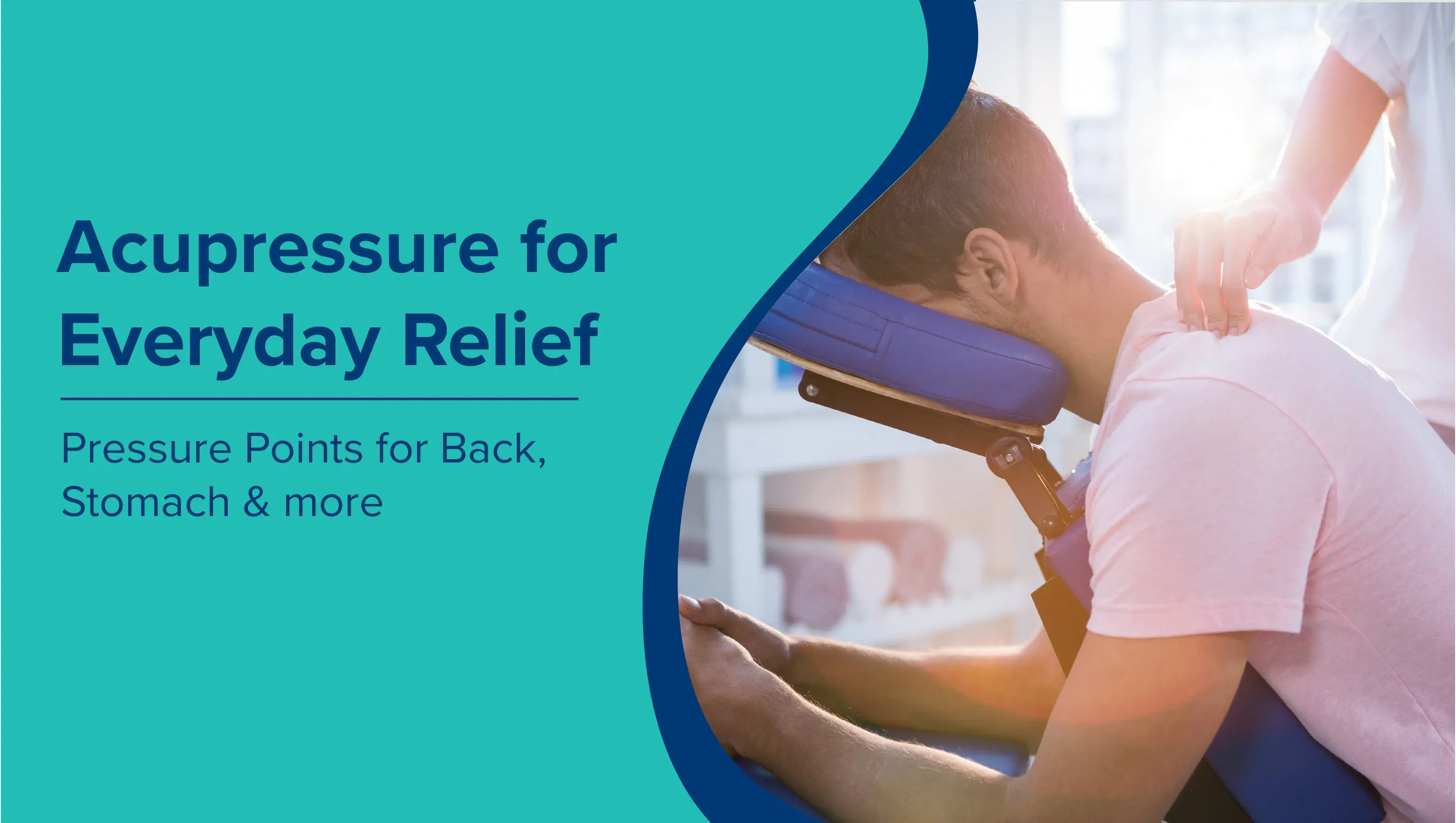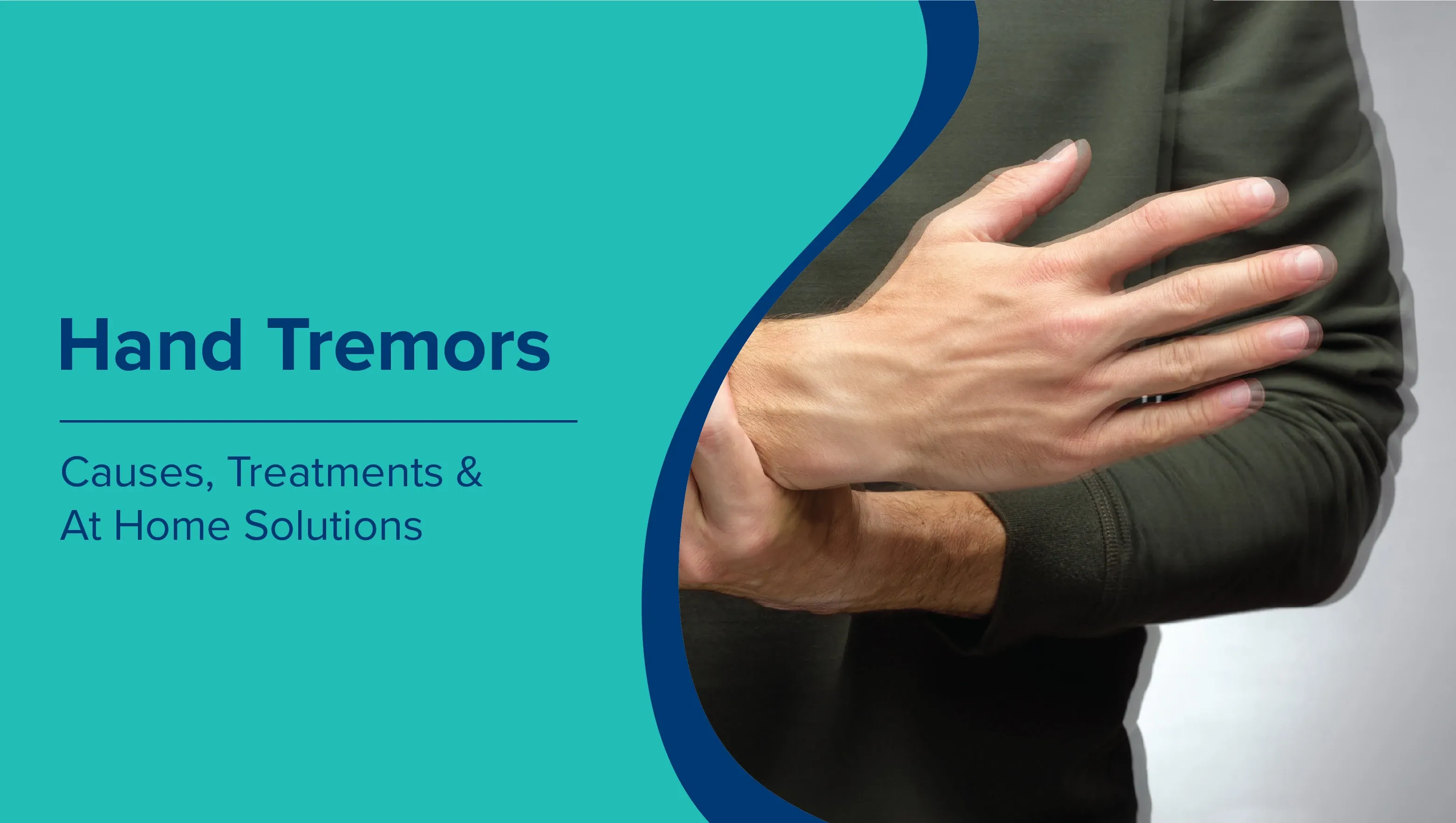Back pain, often triggered by poor posture, prolonged sitting hours, or daily physical stress, is a common problem most people face in their lives. While medication and therapy are often recommended for long-term relief, many people look for quicker, natural ways to ease back pain. That brings us to acupressure - an ancient healing practice rooted in Traditional Chinese Medicine, which serves as an effective alternative to medication. It offers a non-invasive method to stimulate specific pressure points on the body, helping to release blocked energy, relax muscles, and reduce pain. In this article, we have discussed the most effective acupressure points for quick back pain relief, learn how to apply them safely, and discover natural tips to support long-term spine health.
What is Acupressure?
Acupressure is a traditional healing technique that involves applying gentle but firm pressure to specific points on the body. Originating from Traditional Chinese Medicine (TCM), it is based on the belief that energy, or Qi, flows through invisible pathways called meridians. When this flow is disrupted, it may lead to pain or illness.
Unlike acupuncture, which uses needles, acupressure uses the hands, fingers, knuckles, or even specialised tools to stimulate these points. The goal is to restore energy balance, relieve tension, and activate the body’s natural healing mechanisms.
Today, acupressure is widely used as a complementary therapy to manage pain, improve circulation, reduce stress, and support overall wellness, especially in conditions like back pain, where muscular and nerve-related tension is involved.
How Acupressure Helps with Back Pain
Acupressure offers a gentle yet effective way to relieve back pain by addressing both physical tension and underlying energy imbalances. It works through the stimulation of specific pressure points that correspond to different parts of the spine and muscles. Here’s how acupressure helps manage and reduce back pain:
- Releases muscle tension: Targeted pressure can relax tight muscles, ease stiffness, and reduce spasms that often cause or worsen back pain.
- Improves blood circulation: By enhancing local blood flow, acupressure supports healing and reduces inflammation in affected areas.
- Stimulates the nervous system: Applying pressure to certain points sends signals to the brain that may trigger the release of endorphins, natural painkillers that help reduce discomfort.
- Restores energy balance (Qi): According to Traditional Chinese Medicine, blocked or stagnant energy along meridians contributes to pain. Acupressure helps restore smooth energy flow, promoting internal balance and relief.
Key Acupressure Points for Instant Back Pain Relief
Certain acupressure points are particularly effective in easing back pain, whether it's localised in the upper, middle, or lower back. These points can be stimulated using gentle, steady pressure for 1–2 minutes while breathing deeply. Here are some of the most useful points to try:
Acupressure Points for Lower Back Pain
B23 (Kidney Shu Point)
- Location: On the lower back, about two finger-widths from the spine, at waist level
- Benefit: Relieves lower back stiffness and fatigue, especially in the lumbar region
B47 (Will’s Chamber)
- Location: Around two finger-widths outside B23, on either side of the spine
- Benefit: Supports relaxation of lower back muscles and enhances energy flow
GB30 (Huantiao)
- Location: Midpoint between the top of the hip and the base of the buttock, on the outer side
- Benefit: Eases sciatica-related pain and tension in the lower back and hips
GV3 (Yaoyangguan)
- Location: On the spine, just below the second lumbar vertebra
- Benefit: Alleviates lower back pain and strengthens the lumbar region
Acupressure Points for Upper Back Pain
SI3 (Houxi)
- Location: On the outer edge of the hand, just behind the knuckle of the little finger
- Benefit: Helps with stiffness in the upper spine and tension radiating between the shoulders and lower back
GB21 (Gallbladder 21)
- Location: At the top of the shoulders
- Benefit: Eases tightness in the neck and upper back; commonly used for tension-related upper back pain
Acupressure Points for Back Pain in Hand
LI4 (Hegu)
- Location: In the web, between the thumb and index finger
- Benefit: A powerful general pain reliever; helps reduce back tension when used in combination with other points
Note on Female-Specific Pressure Points and Their Benefits
While most acupressure points are effective for both men and women, certain points may provide added relief for women during hormonal changes or menstrual discomfort:
- B23 (Kidney Shu Point) – Offers relief during menstrual-related lower back discomfort
- GB21 (Gallbladder 21) – Useful for stress-induced upper back tension
- LI4 (Hegu) – Often used to ease back, and pelvic tension linked to hormonal fluctuations
Tips for Using Acupressure Safely
While acupressure is generally safe and easy to perform at home, it’s important to follow a few basic precautions to ensure it’s both effective and comfortable. Here are key tips to keep in mind:
- Use gentle, steady pressure: Apply firm but not painful pressure using your fingers, thumbs, or knuckles. If the area feels sore or bruised, reduce the pressure or stop.
- Stick to short sessions: Stimulate each point for 1–2 minutes at a time. Overstimulation may lead to fatigue or discomfort.
- Breathe deeply: Deep, relaxed breathing during acupressure enhances its calming effects and helps release tension more effectively.
- Avoid sensitive or injured areas: Do not apply pressure over open wounds, swollen spots, varicose veins, or inflamed skin. Always skip areas with recent surgeries or fractures.
- Stay hydrated after use: Drinking water after an acupressure session may help flush out toxins and improve circulation.
When to See a Doctor
While acupressure can offer quick relief for mild to moderate back pain, it is not a replacement for medical treatment, especially when the pain is persistent or severe. Knowing when to seek professional help is crucial for proper diagnosis and care.
Consult a doctor if:
- Back pain lasts more than a few days:
Persistent discomfort may be a sign of an underlying condition such as a disc problem, arthritis, or spinal imbalance.
- The pain radiates to the legs:
Numbness, tingling, or shooting pain down the legs could indicate nerve compression or sciatica.
- There is weakness or loss of bladder control:
These symptoms require urgent medical evaluation and may signal a serious spinal issue.
- You have a history of injury or chronic illness:
If back pain follows an accident or occurs alongside conditions such as osteoporosis or diabetes, professional assessment is important.
- Acupressure offers little to no relief:
If the pain persists or worsens after several sessions, it’s best to stop and consult a healthcare provider.
Additional Natural Remedies to Complement Acupressure
While acupressure is a powerful tool on its own, combining it with other natural practices can enhance relief and support long-term back health. These methods are simple, accessible, and often work well alongside regular acupressure sessions.
Consider the following:
- Stretching and yoga: Gentle stretches and yoga poses such as Cat-Cow, Child’s Pose, or Supine Twist help release tension, improve flexibility, and strengthen back muscles.
- Heat therapy: Applying a warm compress or heating pad to the affected area can relax tight muscles and improve blood flow, easing stiffness and pain.
- Self-massage or foam rolling: Light massage using hands or a foam roller can reduce muscle knots and enhance relaxation, especially after acupressure.
- Posture correction: Maintaining proper posture while sitting, standing, or lifting can prevent strain on the back. Supportive chairs and ergonomic work setups can make a big difference.
- Mind-body techniques: Practices such as meditation, deep breathing, or mindfulness can help manage stress, which is often a contributing factor in back pain.
Book Safe and Effective Back Pain Relief Services at Home
Acupressure is a simple, natural method that can provide quick relief from back pain when used correctly. Whether caused by daily stress, muscle fatigue, or poor posture, stimulating the right pressure points can ease discomfort and promote relaxation. However, for persistent or more serious back issues, professional care may be necessary. MaxAtHome offers expert physiotherapy and back pain management services delivered right at home. From acupressure-based therapy to guided rehabilitation and posture correction, our experienced professionals ensure safe, effective, and personalised care, without the need to travel.
To book back pain relief services with MaxAtHome, call us at 09240299624 or schedule your session online through our easy-to-use booking platform.
Frequently Asked Questions
What are the best acupressure points for lower back pain relief?
Commonly recommended points include B23 (Kidney Shu Point), B47 (Will’s Chamber), and GB30 (Huantiao). These help relieve discomfort caused by muscle tension, sciatica, or long hours of sitting.
What are the most effective acupressure points for upper back pain relief?
Points like SI3 (Houxi) and GB21 (Gallbladder 21) are often used to ease upper back stiffness, shoulder tension, and stress-related tightness.
Where is the pressure point in your hand to relieve back pain?
The LI4 (Hegu) point, located between your thumb and index finger, is a well-known hand pressure point used to reduce general pain, including backaches. It’s often used alongside back-specific points for added relief.
Can I perform acupressure for upper back pain at home?
Yes, self-acupressure for upper back pain is safe and effective when done mindfully. Use your fingers, massage balls, or tennis balls to apply gentle pressure, avoiding inflamed or injured areas.
How quickly can I expect relief from back pain through acupressure?
Many people feel relief within minutes of stimulating the right pressure points. However, the response can vary based on the severity and cause of the pain. Regular practice may improve long-term results.
Can I use acupressure daily for back pain?
Yes, acupressure can be used daily as long as it's done gently and mindfully. Short sessions of 5–10 minutes are usually safe and effective.
Is acupressure safe for pregnant women with back pain?
Some acupressure points may not be safe during pregnancy. It’s best to consult a healthcare provider or certified therapist before using acupressure while pregnant.
Are there specific acupressure points that address both gas relief and back pain?
Yes. Points like LI4 and B23 are used in Traditional Chinese Medicine to relieve both digestive issues and back discomfort. For combined concerns, personalised therapy is recommended.
Where can I find trained acupressure or physiotherapy experts near me?
MaxAtHome provides qualified physiotherapists who offer at-home back pain relief therapies, including acupressure-based techniques. Call 09240299624 to check availability in your area.















